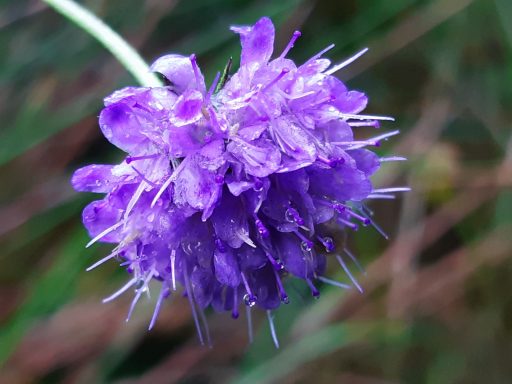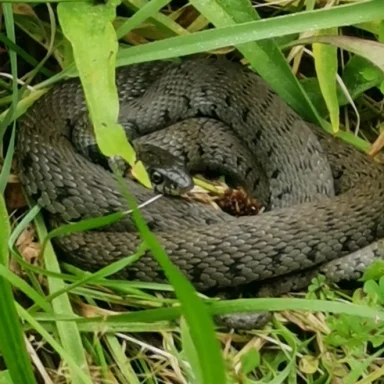The Biological Space
Environmental surveys are being carried out to give a baseline for planning and assessing how the wood is developing.
Habitat Survey
Detailed surveys of the wood to determine the habitats that make the environment of Olaf's Wood.
Soil Survey
Together with the physical and chemical sampling, comprehensive biological surveys of the soil microbiome.

Floral Survey
Together with the habitat surveys, floral surveys of bryophytes, flowers, trees and hedgerows.
Fauna Survey
Surveys of breeding birds, moths and butterflies, reptiles, dormice, bats and ad hoc records of other animals, e.g., mammals and birds.
Soil Survey
An ecosystem in its own right
The soil has been analysed for its microbiome. From samples collected by Axel Steenberg in May 2023, SoilBioLab assessed for moisture content, bacterial and fungal activity, protozoa (flagellates, amoeba, ciliates), nematodes and looked for mycorhizzae. From these observations, they determined the soil health and potential soil nitrogen from microbiological activity.
Whereas soil moisture in spring was optimal at 30 – 51%, levels of active bacteria, fungi, protozoa, and nematodes were low. For protozoa, levels of ciliates were optimal, but amoeba and flagellates were very low to low. Nevertheless, the soil is alive, and the level of soil fertility is what we expected, based on its soil chemistry and the general health of the land, i.e., it was relatively poor-quality farmland. Based on microbiological activity, the level of available cycled nitrogen varies from quite low at <6 kg/ha to a higher 56 kg/ha but these give relatively low levels of soil fertility.
Drilling in further, the nematodes are fungal feeders 46 – 60%, bacteria feeders 30 – 40%, plant parasitic 7 – 20% and juveniles 3 – 7%. There are high levels of ectomycorrhizae in the established woodland areas, and low to optimal levels of endomycorrhizae in the old fields. Hyphal diameters are optimal in the range 2.68 – 3.23 µg. Endomycorrhizae are characteristic of vascular plants rather than woody trees, so they are found at Olaf's Wood in those areas that were formerly farmed, but they are lower in those fields that quite wet throughout the year and waterlogged during the winter, as well as those that were ploughed in 2016 before being planting with new trees. Ectomycorrhizae are at high levels (80% colonization) and found in the established woodland areas where trees are over 100 years old, but they have not yet colonised the areas of newly planted trees - they will do given time but perhaps could do with a bit of help.
Total bacteria levels are very high even though active bacteria are quite low, while the ratio of active fungi to total fungi is less marked. As an idea of scale, there are about a trillion bacteria in each litre of soil at Olaf’s Wood or 60 quintillion for the whole wood, so that’s more than all the insects in the world. So, while the soil is classified as poor quality and the woodland as having low biodiversity, there is a lot of life going on here.
The inactive bacteria are not dead but in stasis, ready to be sparked into activity when the conditions are right for them, as and when they are needed. What these quite high levels of total bacteria and total fungi show is an old, established soil microbiome that has not been destroyed by chemicals and physical processes from high input farming and that there is a wide microbiological gene pool on which the soil can draw depending on the needs of the soil itself.
Indeed, the soil should be understood as an organ that has a genetic pool that it can draw on to process the raw materials as they are presented to it, but that those genes can lie dormant until needed in the future. Think of it like a vast library of biological potential rather than a dead zone and that the level of activity matches the needs of the land.
Gallery - Flora
There is a diverse range of plants and fungi across the woodland, some woodland specialists as well as relics of its farming past.
Gallery - Fauna
Olaf's Wood has a relatively low level of biodiversity, but there is still a lot to see.
© Copyright. All rights reserved.















